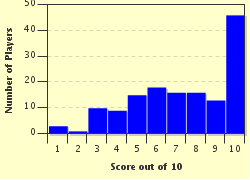Quiz Answer Key and Fun Facts
1. Not much is known about the origins of the Inca people. According to local legend the creator god Viracocha rose from which lake to create the Inca people?
2. Which Inca king turned the small Cuzco city-state into the largest empire in pre-Columbian history?
3. Language is arguably the most important trademark of a society. What was the language of the Inca, a language still spoken in Peru today?
4. How did the Inca call their own empire?
5. The Inca empire was vast and consisted for a large part of mountainous regions. Communications throughout such an empire can't have been easy. However the Incas developed an efficient system of communications making use of chasquis. What exactly are chasquis?
6. On the Inca trail you could find many tambos. What are they?
7. Food was a scarce commodity in the Inca empire and the available food had to preserved. For this purpose the Incas used qollqas. What exactly is a qollqa?
8. Maize and potatoes were the most important parts of the Inca diet. The Inca also ate cuy, an animal considered a pet in western countries. What is a cuy?
9. The Inca used quipus to do their accountancy. What exactly are they?
10. For their religious ceremonies the Incas used an intihuatana. What is an intihuatana?
Source: Author
AlonsoKing
This quiz was reviewed by FunTrivia editor
stedman before going online.
Any errors found in FunTrivia content are routinely corrected through our feedback system.


